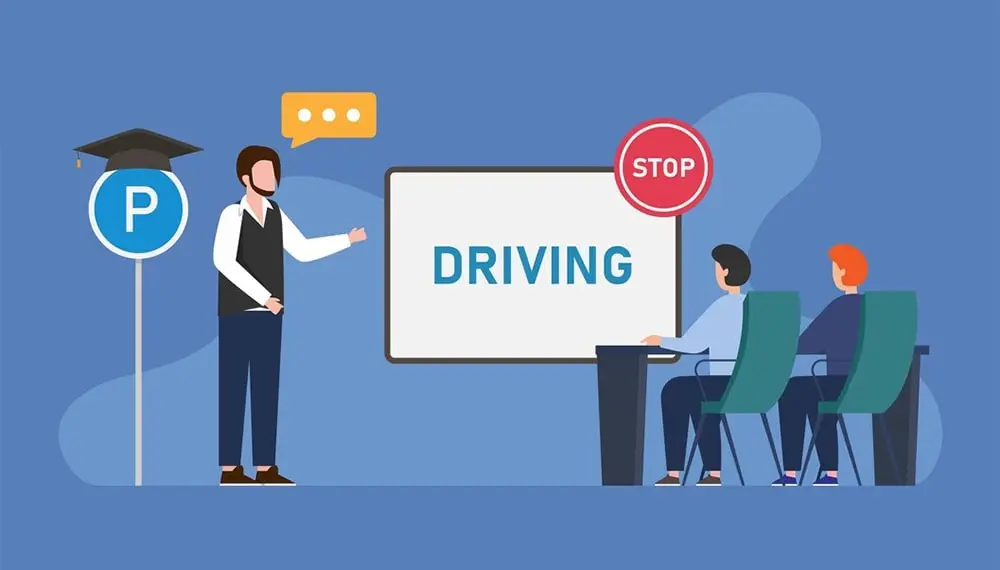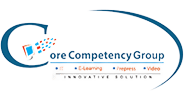Complete Guide to Employee Preboarding in 2024
Rohit Kumar
01 Jul, 2024

Preboarding is a crucial but often overlooked step in the employee onboarding process. It refers to the period between a new hire accepting a job offer and their first day at work. This phase can significantly impact an employee’s experience and engagement with the company.
Research shows that effective preboarding can improve new hire retention by up to 82%. During this period, new hires often experience anxiety and uncertainty about their new role. A structured preboarding process helps to alleviate these concerns and sets a positive tone for their journey.
Unlike onboarding, which focuses on integrating employees into the company, preboarding aims to prepare new hires for their first day. This preparation involves completing the necessary paperwork, setting up equipment, and introducing them to the company culture. By addressing these tasks early, organizations can ensure a smoother transition for new employees.
This guide explores the importance of preboarding and provides practical implementation strategies. We will also highlight key elements to include and share tips on avoiding common pitfalls. Through careful planning and execution, preboarding can enhance the onboarding experience and contribute to long-term employee success.
What is Preboarding?
Preboarding is the initial phase in the employee onboarding process after they accept the job offer and before their first day at work. It serves as a bridge between recruitment and full-scale onboarding, aimed at easing the new hire into their role and the company culture.
The primary goal of preboarding is to prepare new employees for a smooth start. That involves providing them with essential information and completing necessary administrative tasks. Preboarding helps new hires feel welcomed and reduces the stress of starting a new job.
Key activities during the preboarding phase include:
-
Sending welcome emails with essential details about the start date, dress code, and first-day agenda
-
Providing access to necessary paperwork such as tax forms, company policies, and benefits information
-
Setting up accounts for email, company intranet, and other essential tools
Preboarding also focuses on introducing new hires to the company culture. That can be achieved by sharing the employee handbook, company values, and an overview of the team structure. Early exposure to the company’s mission and values helps build a connection even before the first day.
Another critical aspect of preboarding is addressing logistical details. Ensure new hires have all the necessary equipment, such as laptops and access cards, ready for their first day. That minimizes downtime and allows them to be productive from the start.
Why Preboarding Matters
Preboarding is critical in shaping a new hire's early experience with the company. This initial phase can significantly influence their engagement, productivity, and long-term retention.
A successful preboarding process increases employee retention. A well-structured preboarding process can increase new hire retention by up to 82%. It also reduces the likelihood that new hires will reconsider joining the company if they feel valued early on.
Preboarding also addresses common anxieties that new employees face. By providing clear information and guidance before the first day, preboarding helps alleviate the stress associated with starting a new job. It makes new hires more confident and comfortable transitioning into their roles.
Key benefits of preboarding include:
-
Increased Loyalty: Early interaction and engagement foster a sense of belonging and commitment to the company
-
Reduced Turnover: By engaging new hires from the start, preboarding minimizes the risk of them accepting counteroffers or exploring other opportunities
-
Improved First-Day Experience: Addressing administrative tasks and logistical details beforehand allows new hires to focus on meaningful activities from day one
Preboarding helps in building early connections. Introducing new hires to their team and the company culture before they start work helps them feel integrated from the beginning. This early connection can lead to better teamwork and collaboration.
An Effective Preboarding Process
A well-designed preboarding process can significantly impact a new hire's experience and long-term company success. Here are the key elements to include for an effective preboarding process.
Welcome Communication
Start with a personalized welcome email. That should include essential information such as the start date, arrival time, dress code, and a brief overview of the first-day agenda. Providing early access to the employee handbook and training materials helps new hires become familiar with the company’s policies and culture.
Administrative Preparation
Handling administrative tasks before the first day allows new hires to focus on more meaningful activities. Key tasks include:
-
Setting up email accounts, employee portals, and necessary software
-
Completing new hire paperwork, such as tax forms and benefits enrollment
-
Ensuring all equipment, like laptops and access cards, is ready and functional
Introduction to Company Culture
Introducing new hires to the company culture before they start helps them feel connected. Share materials highlighting the company’s mission, values, and team structure. Providing insights into the company culture through videos or virtual tours can be very effective.
Early Engagement Activities
Engaging new hires early helps build excitement and reduces first-day jitters. Activities can include:
-
Sending a welcome pack with branded items like a t-shirt, mug, or notebook
-
Introducing the new hire to their team via email or a virtual meeting
-
Assigning a buddy or mentor to answer questions and provide support
-
Hosting a preboarding hangout or virtual coffee chat to build rapport
Logistical Details
Clear communication about logistical details ensures a smooth start. This includes information on:
-
Parking arrangements or virtual meeting links
-
Office layout or virtual office tour
-
First-day schedule and any specific instructions
Preboarding Activities for Success
Implementing effective preboarding activities can significantly improve new hire retention and engagement. The following steps will help you ensure success during the preboarding process.
Personalized Welcome Packs
Sending personalized welcome packs creates a positive first impression. These can include:
-
Branded items like t-shirts, mugs, and notebooks
-
Personalized notes from team members
-
Practical items like company handbooks and training materials
Buddy Systems
Assigning a buddy to each newly hired provides a go-to person for questions and support. As a result, new hires feel more comfortable and connected from the beginning. Buddies can also introduce them to other team members and help navigate the company's culture.
Early Engagement Activities
Engage new hires with activities that build excitement and reduce anxiety. These activities can include:
-
Virtual coffee chats or lunch meetings
-
Team introductions via email or video calls
-
Informal meetups or team-building exercises
-
Virtual tours of the workplace
Timely Communication
Keep communication clear and consistent. Regular check-ins help maintain engagement and address any concerns before the first day. Send updates on what to expect, key contacts, and any changes to the schedule.
Setting Clear Expectations
Provide a detailed schedule for the first week. Include information on training sessions, meetings with key team members, and any required tasks. That will help new hires feel prepared and reduce first-day uncertainty.
Feedback Collection
Ask for feedback on the hiring process and initial preboarding experience. That will show new hires that their opinions are valued and help improve the process for future employees. Use a mix of surveys and informal check-ins to gather insights.
Access to Learning Platforms
Give new hires early access to the company’s learning platform. That will allow them to explore training materials and get a head start on their onboarding journey. It will also provide a glimpse into the company's commitment to continuous learning.
Step-by-Step Preboarding Checklist
An organized preboarding checklist ensures that no critical steps are missed. Here is a step-by-step guide to help create a comprehensive preboarding experience.
Initial Welcome and Communication
-
Send a personalized welcome email with key details: start date, arrival time, dress code, and first-day agenda
-
Include access to the employee handbook and any training materials
-
Introduce the new hire to their team through a group email or virtual meeting
Administrative Preparation
-
Set up email accounts, employee portals, and necessary software
-
Complete all new hire paperwork, including tax forms and benefits enrollment
Introducing Company Culture
-
Share the company's mission, values, and team structure through videos or documents
-
Provide a virtual tour of the workplace, if applicable
-
Assign a buddy or mentor to help the new hire navigate the company culture
-
Plan a preboarding hangout or team-building exercise
-
Highlight recent company achievements or milestones
Early Engagement Activities
-
Schedule virtual coffee chats or informal meetups with team members
-
Send branded items like a notebook, t-shirt, or mug as a welcome pack
Logistical Details
-
Communicate parking arrangements or virtual meeting links
-
Provide information on the office layout or a virtual office tour
-
Outline the first-day schedule and any specific instructions
Setting Clear Expectations
-
Provide a detailed schedule for the first week, including training sessions and meetings
-
Clarify job responsibilities, performance expectations, and critical projects
-
Offer access to the company's learning platform for early exploration
-
Outline the performance review process and initial goals
Feedback and Continuous Improvement
-
Collect feedback on the hiring process and initial preboarding experience
-
Use a mix of surveys and informal check-ins to gather insights
-
Continuously refine the preboarding process based on new hire feedback
Using Technology to Enhance Preboarding
Leveraging technology in the preboarding process can streamline tasks and improve the overall experience for new hires. Use technology effectively by following these tips.
Learning Management Systems (LMS)
Using an LMS allows new hires to access training materials before their start date. That prepares them for their role and helps them become familiar with the company's processes and culture. Key benefits include:
-
Access to on-demand training modules
-
Tracking progress and completion of preboarding tasks
-
Interactive content that engages new hires
-
Providing certificates upon completion of courses
Collaborative Platforms
Platforms like Slack or Microsoft Teams facilitate early communication and team integration. They enable new hires to interact with colleagues, ask questions, and understand the company's communication style. Effective uses include:
-
Creating dedicated channels for new hires
-
Hosting virtual meet-and-greet sessions
-
Sharing essential documents and resources
Automated Onboarding Software
Automating administrative tasks saves time and reduces the risk of errors. Onboarding software can handle various tasks, such as:
-
Sending welcome emails and reminders
-
Managing digital forms and paperwork
-
Scheduling meetings and training sessions
Virtual Reality (VR) Tours
VR tours can offer an immersive experience for companies with large or remote workforces. They help new hires explore the workplace and understand the layout without being physically present. Benefits of VR tours include:
-
Providing a realistic view of the workspace
-
Introducing new hires to critical areas and facilities
Mobile Apps
Mobile apps provide flexibility and convenience for new hires to complete preboarding tasks on the go. They offer features such as:
-
Access to training materials and company information
-
Push notifications for important updates
-
Interactive checklists and progress tracking
-
Integration with company communication tools
Online Feedback Tools
Collecting feedback through online tools helps improve the preboarding process. Tools like SurveyMonkey or Google Forms can gather insights from new hires efficiently. Key uses include:
-
Conducting surveys on the preboarding experience
-
Gathering suggestions for improvement
-
Monitoring satisfaction levels and addressing concerns
Measuring the Effectiveness of Preboarding
Evaluating the success of a preboarding program is crucial for continuous improvement. Here are vital methods to measure its effectiveness.
Key Metrics and KPIs
Tracking specific metrics helps determine the impact of preboarding on new hires. Important metrics include:
-
New hire retention rates
-
Time to productivity
-
Employee engagement scores
-
Feedback from new hires
Employee Feedback
Collecting feedback from new hires provides insights into their preboarding experience. Use various tools to gather this information:
-
Surveys conducted through platforms like SurveyMonkey or Google Forms
-
One-on-one feedback sessions with HR representatives
-
Anonymous suggestion boxes for candid input
-
Exit interviews for those who leave early
Onboarding Success
Assessing the onboarding process's overall success can also reflect preboarding's effectiveness. Key indicators to monitor are:
-
Completion rates of preboarding tasks
-
Attendance at preboarding activities and sessions
-
Participation in early engagement activities
Manager Observations
Managers play a vital role in observing new hires' integration. Preboarding can benefit from their feedback. Areas to consider include:
-
New hire readiness and confidence levels
-
Early performance and productivity indicators
-
Integration with the team and company culture
Continuous Improvement
Using the data collected, make informed adjustments to the preboarding process. Steps for continuous improvement include:
-
Analyzing feedback and identifying common themes
-
Implementing changes based on feedback and metrics
-
Regularly reviewing and updating preboarding materials and activities
-
Benchmarking against industry best practices
Engagement Tracking
Monitoring new hire engagement throughout the preboarding period helps ensure they remain excited and committed. Effective methods include:
-
Tracking participation in preboarding platforms and activities
-
Monitoring communication channels for engagement
-
Keeping a log of interactions and follow-ups
Common Pitfalls and How to Avoid Them
While preboarding can greatly benefit new hires, common pitfalls undermine its effectiveness. Here are some pitfalls to watch out for and strategies to avoid them.
Overloading New Hires with Information
Providing too much information at once can overwhelm new hires and cause unnecessary stress. To avoid this, consider the following:
-
Spread out the information over several days
-
Use a mix of communication methods (emails, videos, interactive sessions)
Lack of Personalization
A generic preboarding experience can make new hires feel like just another number. Personalization helps new hires feel valued. Ways to personalize include:
-
Sending personalized welcome messages
-
Tailoring the preboarding materials to the specific role
-
Assigning a buddy or mentor for personalized support
-
Including personal touches like handwritten notes
Insufficient Engagement Activities
Failing to engage new hires early can lead to a lack of enthusiasm and connection. Enhance engagement by:
-
Organizing virtual meet-and-greets with team members
-
Incorporating interactive elements in the preboarding process
Ignoring Feedback
Not collecting or acting on feedback can prevent improvements in the preboarding process. To avoid this, implement the following:
-
Conduct surveys and feedback sessions
-
Analyze feedback for common issues and suggestions
-
Make visible changes based on the feedback received
Inadequate Equipment and Resources
Delays in providing necessary tools and resources can frustrate new hires and delay their productivity. Ensure readiness by:
-
Preparing equipment and software in advance
-
Confirming all resources are available before the start date
-
Providing clear instructions for setting up and using the tools
Poor Communication
Lack of clear and consistent communication can leave new hires feeling lost. Improve communication by:
-
Maintaining regular contact through various channels
-
Clearly outlining the preboarding schedule and expectations
Future Trends in Preboarding
The preboarding process continually evolves and is influenced by technological advancements and changing workforce expectations. Here are some future trends to watch in preboarding.
AI and Automation
Artificial intelligence and automation transform preboarding by streamlining repetitive tasks and personalizing the experience. Key applications include:
-
Chatbots to answer common new hire questions
-
Automated scheduling of meetings and training sessions
-
Personalized onboarding content based on role and preferences
Remote and Hybrid Work Integration
As remote and hybrid work models become more prevalent, preboarding must adapt to support these environments. Effective strategies include:
-
Virtual reality (VR) tours of the workplace
-
Online collaboration tools for team integration
-
Digital onboarding portals accessible from anywhere
Diversity and Inclusion Initiatives
Fostering a diverse and inclusive workplace begins during preboarding. Emerging practices include:
-
Inclusive training programs highlighting company values
-
Resources tailored to diverse backgrounds and needs
-
Early introduction to employee resource groups (ERGs)
Gamification of Preboarding
Incorporating gamification elements into preboarding can make the process more engaging and enjoyable. Examples of gamification include:
-
Interactive quizzes and challenges related to company culture
-
Badges and rewards for completing preboarding milestones
Health and Wellness Focus
Recognizing the importance of employee well-being, preboarding can include health and wellness components. Initiatives might include:
-
Virtual fitness sessions or wellness webinars
-
Access to mental health resources and support
-
Encouraging work-life balance from the outset
Data-Driven Decision Making
Leveraging data analytics to refine the preboarding process can lead to better outcomes. Techniques involve:
-
Analyzing feedback to identify areas for improvement
-
Tracking engagement metrics to gauge effectiveness
-
Using predictive analytics to personalize the experience
Sustainability Efforts
Incorporating sustainability into preboarding reflects a commitment to environmental responsibility. Sustainable practices include:
-
Digital documentation to reduce paper use
-
Eco-friendly welcome packs with reusable items
Preboarding is a critical phase that can shape a new hire's early experiences and long-term success within a company. It bridges the gap between accepting a job offer and the first day at work, providing essential information, reducing anxiety, and fostering early engagement.
Effective preboarding strategies include personalized welcome packs, buddy systems, and timely communication. Leveraging technology, such as learning management systems and virtual reality tours, can enhance the process, making it more efficient and engaging. Measuring the effectiveness of preboarding through critical metrics and feedback ensures continuous improvement.
Avoiding common pitfalls, like overloading new hires with information or failing to personalize the experience, is crucial. By addressing these challenges, companies can create a seamless and positive preboarding process that sets the stage for successful onboarding and long-term employee retention.
Core Competency offers comprehensive solutions that significantly improve your preboarding and onboarding processes. With our advanced Learning Management Systems, custom e-learning development, and personalized consultation services, we ensure that new hires feel welcomed, prepared, and excited to join your organization. Explore our services to elevate your talent management and corporate training programs.




